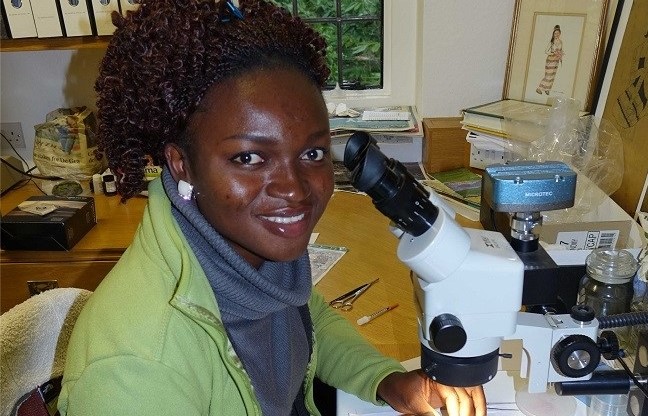After 15 months of intensive survey using mist-nets and harp traps to catch bats, award-winning bat specialist, Dr. Iroro Tanshi, led a research team that found 36 bat species, of which 10 had never been seen in Nigeria before. The report of this study was published in the journal Acta Chiropterologica on Monday, February 14, 2022.

Tanshi and her research team combed through the forests of Afi Mountain Wildlife Sanctuary and Cross River National Park (Okwangwo Division) in Cross River state between May 2015 to January 2018 to carry out this intensive bat survey.
Before now, 90 species of bats were known to occur in Nigeria. And this number represents almost a third of the different species of bats that are known to occur in Africa. This survey was not only said to be effective in increasing Nigeria’s bat species to 100, but it has also shown us why it is important to protect our remaining forests, and increase our research efforts.
Dr. Inaoyom Imong, the Director of Nigeria’s Cross River Landscape Programme at the Wildlife Conservation Society, said: “Hopefully, these findings will cause people to realize that we need to do more to protect these key biodiversity sites. As a Nigerian, as somebody from Cross River, I’m particularly happy to see these findings. It goes to say that there’s a lot more to learn from my forest in terms of biodiversity.”
“You’re not going to find the complement of species that you find here elsewhere in the world, so having their habitat intact is critical,” said Dr. Tanshi, Director of Research at SMACON (Small Mammal Conservation Organisation) and author of the report.
Nigeria’s land is ecologically diverse, having many different types of habitat. One of these habitat types is a forest block which extends from south-eastern Nigeria to south-western Cameroon, and is the largest of the six most significant hotspots of bat diversity in Africa. Although this forest block, which includes the surveyed Afi and Okwango forests in south-eastern Nigeria, has been predicted to contain little-known species of bats, its Nigerian part has not received a lot of research attention, especially compared to its Cameroonian part.
Of the 36 bat species recorded in this new survey, 10 were new country records, including an endangered species (Hipposideros curtus), and six were species for which there is insufficient information with which to assess their conservation status (categorised by the IUCN as data-deficient). As a result of Tanshi’s efforts, the endangered bat is now receiving a lot of attention so that work is being done to save it from extinction.
If 15 months of a carefully planned survey by a small research team has updated the knowledge of African bats by yielding 10 new bat species for Nigeria, some of which are of conservation concern, it is evident that much more biodiversity waits to be discovered in previously unsampled places.
This study, it was gathered, shows the need to scale up forest research and conservation efforts in Nigeria, especially in biodiversity-rich areas that have not been surveyed extensively for biodiversity. Ironically, these rich forests are threatened with destruction and unsustainable use.
“It’s a really solid foundation for future ecological and conservation work because we can’t protect any biodiversity if we don’t know what’s there in the first place,” said Tigga Kingston, Professor at Texas Tech University, and one of the paper’s authors.
This is a call for more carefully planned surveys like this, especially to unsampled areas known to be rich in biodiversity. “It’s very important to get out in the field and do that type of survey work,” said Liza Gadsby, Director of Pandrillus Foundation, a conservation NGO that works to protect endangered primates in Afi Mountain Wildlife Sanctuary.
As Prof. Kingston said, “So the ground has been broken and the foundation has been laid; that’s not the end of it. It is only the beginning”.
Some bat species, and other biodiversity, yet unknown, may be living on the brink of extinction. They are waiting for another young Nigerian knight in shining armour, following in Tanshi’s footsteps, to save the day.
“Hopefully, this research would also inspire other researchers to pay more attention to the region and maybe inspire younger researchers as well to take an interest in bat research. There’s a lot to learn. This is one study which has found 10 new recruits for Nigeria. I would imagine how many more records we could potentially find with increased survey effort. So overall, I think this is really good news for Nigeria.,” added Dr. Imong.
